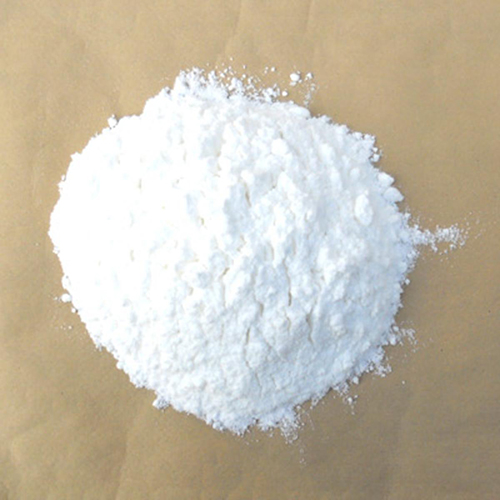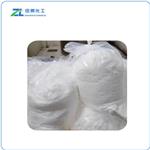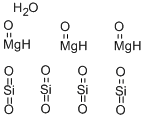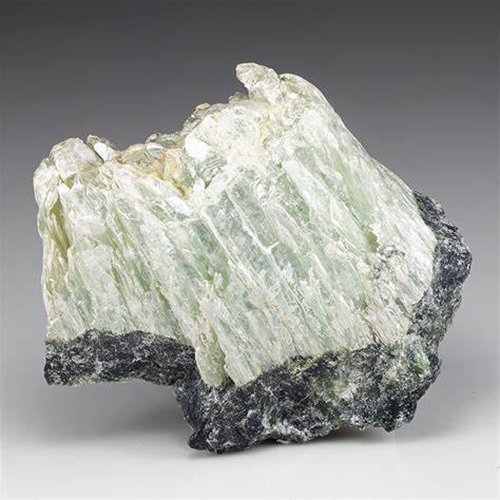Different kinds of talc
Introduction
Talc is a magnesium silicate salt mineral talc talc, the main component is hydrous magnesium silicate, after crushing, it is treated with hydrochloric acid, washed with water and dried. On October 27, 2017, the World Health Organization's International Agency for Research on Cancer released the preliminary list of carcinogens for reference, and talc without asbestos or asbestos-like fibers is in the list of three types of carcinogens[1].

Picture 1 Talc powders
Element
The main component of talc is magnesium silicate containing water, and the molecular formula is Mg3[Si4O10](OH)2. Talc belongs to the monoclinic system. Crystals are pseudo-hexagonal or rhombic flakes, occasionally. Usually into dense massive, leaf-like, radial, fibrous aggregates. It is colorless, transparent or white, but appears light green, light yellow, light brown or even light red due to a small amount of impurities; the cleavage surface is pearly. The hardness is 1, and the specific gravity is 2.7 to 2.8.
Characteristic
Talc has excellent physical and chemical properties such as lubricity, anti-sticking, flow aid, fire resistance, acid resistance, insulation, high melting point, chemical inactivity, good covering power, softness, good gloss and strong adsorption. The crystal structure of Fe2O3 is layered, so it has a tendency to split into scales and special lubricity. If the content of Fe2O3 is high, its insulating properties will be reduced. Talc is soft, its Mohs hardness coefficient is 1~1.5, it has a slippery feeling, the {001} cleavage is very complete, it is easy to split into flakes, the natural angle of repose is small (35°~40°), very unstable, and the surrounding area is very unstable. The rock is silicided and talcated magnesite, magnesite, lean ore or dolomite marble, except for a few moderately stable, generally unstable, joints and fissures are developed, and the physical and mechanical properties of the ore and surrounding rock have an impact on the mining process. The impact is huge.
Industrial production
The mined talc (the raw material of talc powder) is selected from high-quality talc and directly pulverized by Raymond mill or other high-pressure mill. It can be directly packaged in woven bags (50kg, or 25kg woven bags) and sold as finished products. In terms of mining methods, due to the extremely unstable ore and unstable surrounding rocks, the ore bodies are mostly inclined and steeply inclined thick and extra-thick ore bodies, the shape and thickness of the ore bodies vary greatly, and the ore bodies contain stones. In the past, the horizontal stratified sorting and filling mining method was used (some mines still use this method at present).
Chemical grade talcum powder
Chemical grade talc is mostly used in rubber, plastic, paint, and other chemical industries as a strengthening and modifying filler. Features: increase product shape stability, increase tensile strength, shear strength, flexural strength, pressure strength, reduce deformation, elongation, thermal expansion coefficient, high whiteness, uniform particle size dispersion and other characteristics.
Ceramic grade talc
Ceramic grade talc is used in the manufacture of high-frequency porcelain, wireless porcelain, various industrial ceramics, architectural ceramics, daily-use ceramics and pottery glazes. Features: No discoloration at high temperature, increased whiteness after calcination, uniform density, good gloss and smooth surface.
Cosmetic grade talc
Cosmetic grade talc is a premium filler in the cosmetic industry. Features: Contains a large amount of silicon. It has the effect of blocking infrared rays, thus enhancing the sunscreen and anti-infrared properties of cosmetics.
Pharmaceutical food grade talc
Pharmaceutical and food grade talc is used as an additive in the pharmaceutical and food industries. Features: It has the characteristics of non-toxic, tasteless, high whiteness, good compatibility, strong gloss, soft taste and strong smoothness. The PH value is 7-9, which will not degrade the characteristics of the original product.
Paper grade talc
Paper grade talc is used in various high and low grade paper industry products. Features: Paper powder has the characteristics of high whiteness, stable particle size and low abrasion degree. The paper made with this powder can achieve smooth and delicate paper, save raw materials and improve the service life of paper.
Brucite powder type talc
Brucite powder type talc is used in the manufacture of electric porcelain, wireless porcelain, various industrial ceramics, architectural ceramics, daily-use ceramics and ceramic glazes. Features: No discoloration at high temperature, increased whiteness after calcination, uniform density, good gloss and smooth surface.
Reference
1 Baan R, Straif K, Grosse Y, et al. Carcinogenicity of carbon black, titanium dioxide, and talc[J]. 2006.
);You may like
Related articles And Qustion
See also
Lastest Price from Talc manufacturers

US $120.00-65.00/kg2024-04-28
- CAS:
- 14807-96-6
- Min. Order:
- 1kg
- Purity:
- 99%
- Supply Ability:
- 20ton

US $200.00/T2024-04-28
- CAS:
- 14807-96-6
- Min. Order:
- 1T
- Purity:
- 99%
- Supply Ability:
- 100tons



